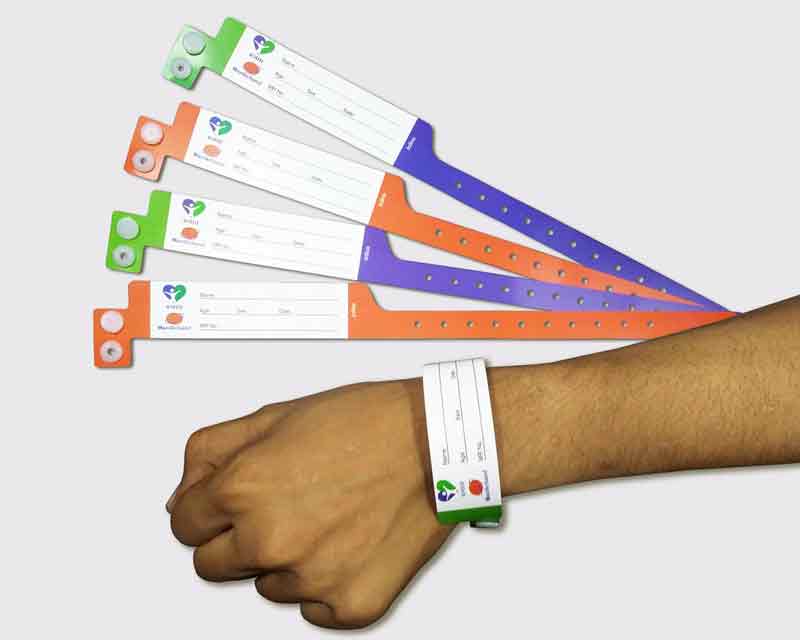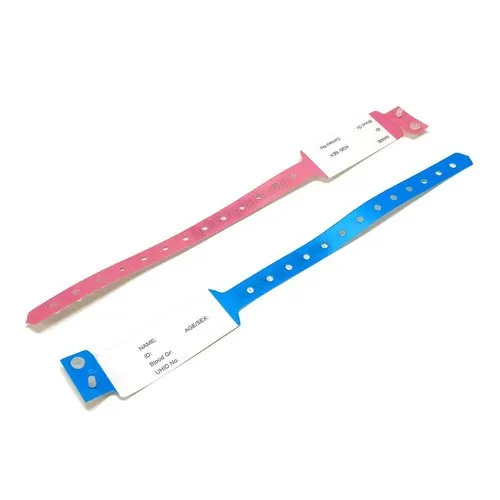A Comprehensive Guide to the Distinct Types of Patient Identification Band
A Comprehensive Guide to the Distinct Types of Patient Identification Band
Blog Article
Discovering the Numerous Sorts Of Patient Identification Band Made Use Of in Clinical Facilities
In the complex world of health care, the essential duty of Patient Identification bands frequently goes undetected. These bands, varying from straightforward paper wristbands to sophisticated RFID bands, create the foundation of Patient safety methods, ensuring accuracy in Patient Identification.
Comprehending the Importance of Patient Identification Bands
While they may seem like mere accessories, Patient Identification bands play a vital duty in clinical centers. These bands offer as an essential device for validating Patient identity, preventing clinical mistakes associated to misidentification. Patient Identification bands additionally help in improving administrative jobs, making certain exact record-keeping and invoicing.
Conventional Paper Wristbands: Their Usage and Limitations
Standard paper wristbands have actually been a staple in Patient Identification across different medical facilities. While their usage prevails, they nurture specific restrictions that might influence their efficiency in Patient monitoring. This area will certainly concentrate on the range of their application and the fundamental disadvantages related to their usage.
Paper Wristbands: Use Range
In the realm of Patient Identification, paper wristbands have long held a crucial duty. These bands are normally made use of in outpatient setups, where the Patient's remain is temporary. The wristbands contain vital information such as the Patient's name, date of birth, and an one-of-a-kind Identification number. This simple, yet effective system, permits clinical experts to quickly and accurately determine patients, ensuring the right treatment is provided. Paper wristbands are additionally utilized in emergency situation situations, where fast Identification is critical. Their usage reaches events like blood contribution drives and mass inoculation programs, further highlighting their versatility. In spite of innovations in technology, the simple paper wristband continues to be a affordable and trusted service for Patient Identification in numerous healthcare situations.
Limitations of Paper Wristbands
Regardless of their prevalent usage, paper wristbands are not without their disadvantages. Their physical durability is just one of the substantial constraints. Direct exposure to water, sweat, or harsh handling can make them unreadable or perhaps trigger them to disintegrate. Furthermore, paper wristbands frequently lack the technological capabilities of even more modern-day options, such as barcoding or RFID chips, restricting their capability to simply showing created info. The failure to update or modify the data on the wristband is an additional shortcoming. In addition, if the info is handwritten, legibility can be endangered, causing prospective misidentification. Paper wristbands can cause pain or skin irritation to some individuals, specifically when used for extended durations.
Barcoded Wristbands: Innovations in Patient Identification
While Patient Identification has long been an important facet of medical care, the advent of barcoded wristbands signifies a significant leap onward. These bands utilize the simpleness of barcoding modern technology, permitting for Patient details to be promptly checked and accessed. They boost the rate and precision of Patient Identification, decreasing the danger of medical errors associated to misidentification.
Superhigh Frequency Identification (RFID) Bands: an Action In The Direction Of Futuristic Healthcare
The evolution of Patient Identification bands has produced the introduction of Superhigh frequency Identification (RFID) Bands (patient identification band). These innovative tools existing crucial benefits for medical care centers, offering an extra reliable and highly advanced means of Patient Identification. The application of RFID in healthcare is a significant step this content towards a much more advanced approach to Patient administration and safety
Comprehending RFID Bands

RFID Bands: Key Benefits
Mainly, these bands boost Patient safety and security by giving exact, instantaneous Identification, thereby reducing medical errors. RFID bands can store a huge amount of Patient information, including clinical background and allergic reactions, enabling customized care. In general, RFID bands represent a considerable innovation in Patient Identification innovation, benefiting both individuals and medical care providers.
Executing RFID in Health Care
These bands provide a smooth method to track and identify individuals, ensuring their safety and security and enhancing efficiency in therapy procedures. RFID bands lower medical mistakes by supplying precise Patient Identification, which is vital in avoiding misdiagnosis or wrong medication management. Therefore, the implementation of RFID bands is a significant step in the direction of boosting Patient security and healthcare shipment.

Color-Coded Wristbands: Helping in Quick and Accurate Medical Diagnosis
In the bustling setting of a medical facility, color-coded wristbands have actually emerged as essential tools for swift and exact Identification of a person's clinical condition. These wristbands, worn by people, lug certain shades that match to various clinical conditions or statuses. This system is created to use immediate visual signs to healthcare companies, boosting Patient security and care quality.
Strategies for Reliable Implementation and Monitoring of Patient ID Bands
Achieving optimal use of Patient Identification bands requires a well-structured method for their application and management. Patient education is additionally vital; individuals should recognize the objective of the bands and the requirement for their constant wear. It's crucial to have a backup strategy in place, such as barcode scanning or biometrics, to make certain that Patient Identification is never ever endangered.
Final thought
Patient Identification bands are essential in medical centers to ensure safety and security and accuracy. Standard paper, barcoded, RFID, and color-coded wristbands each hold unique benefits, varying from cost-effectiveness to sophisticated information storage and immediate clinical notifies. Reliable implementation and administration of these bands can considerably minimize clinical errors, improve performance, and enhance total Patient care. Therefore, understanding and utilizing these Identification tools is extremely important for maintaining high requirements in healthcare.
These bands, differing from basic paper wristbands to sophisticated RFID bands, form the foundation of Patient safety and security protocols, making sure investigate this site accuracy in Patient Identification.The advancement of Patient Identification bands has actually brought regarding the appearance of Radio Regularity Identification (RFID) Bands. On the whole, RFID bands stand for a substantial development in Patient Identification her response technology, benefiting both patients and medical care companies.
RFID bands lower medical mistakes by providing precise Patient Identification, which is important in protecting against misdiagnosis or wrong medicine management. Patient education is additionally crucial; clients should recognize the objective of the bands and the requirement for their consistent wear.
Report this page